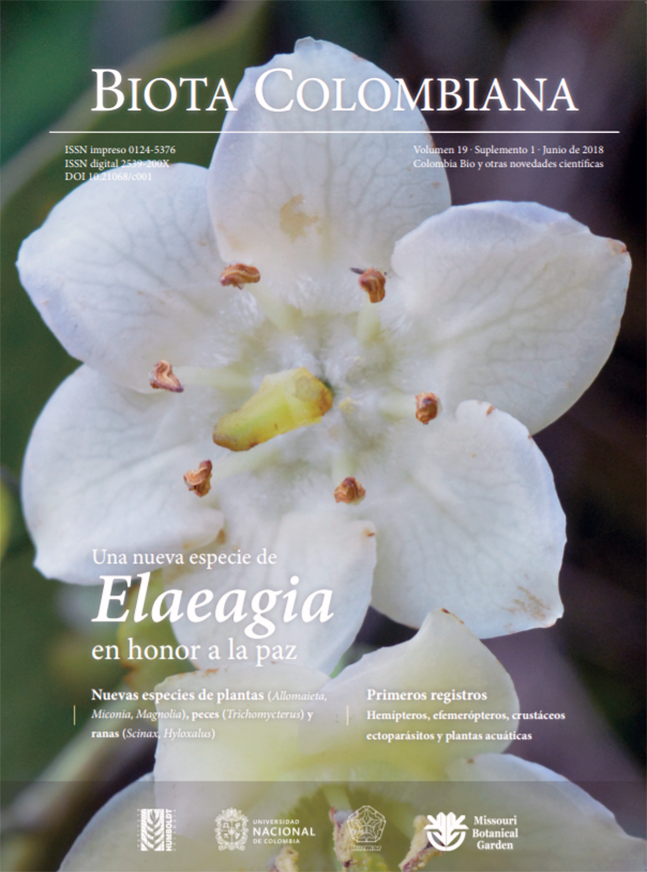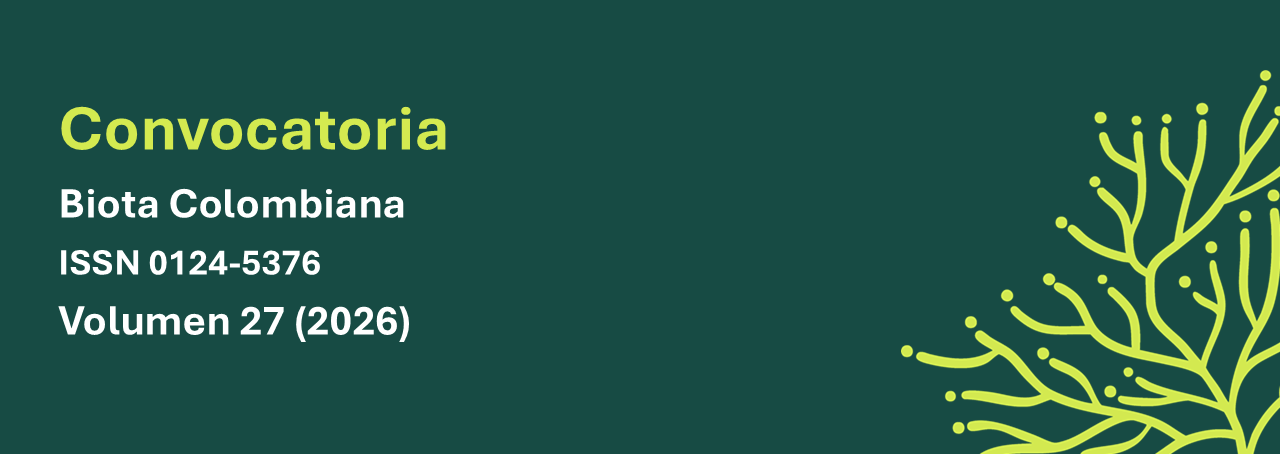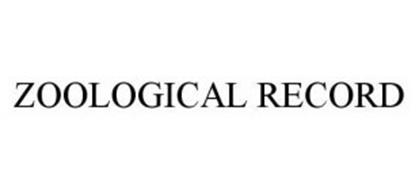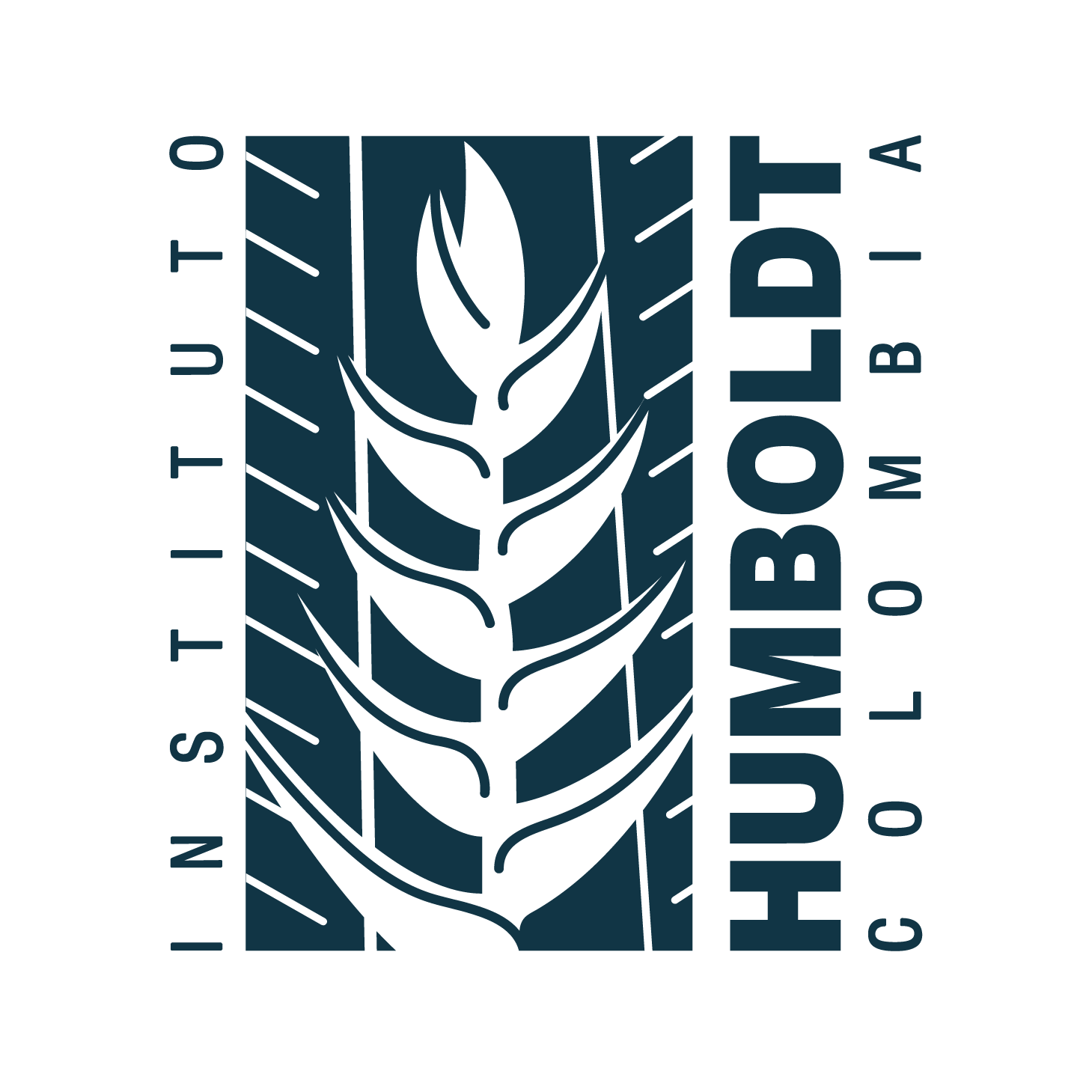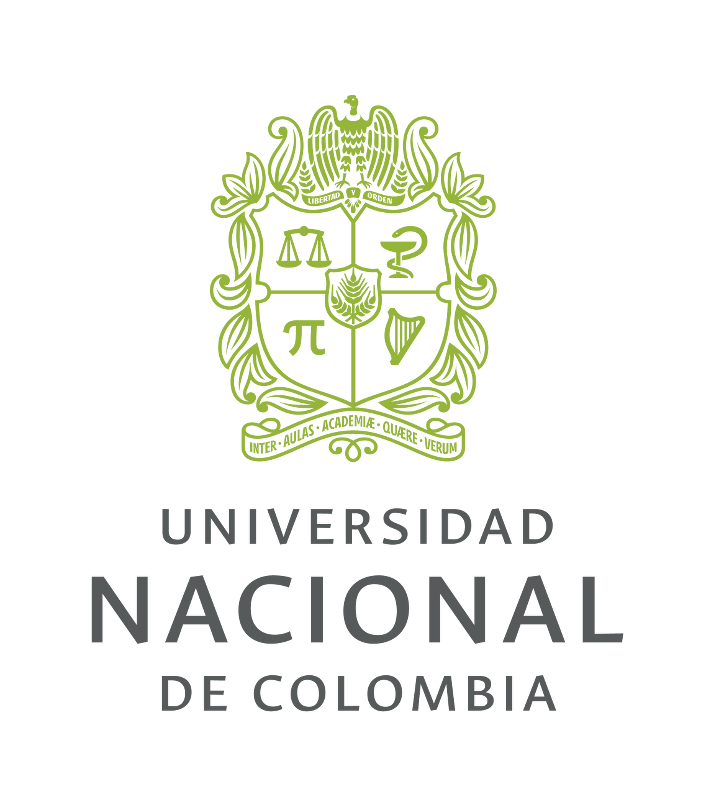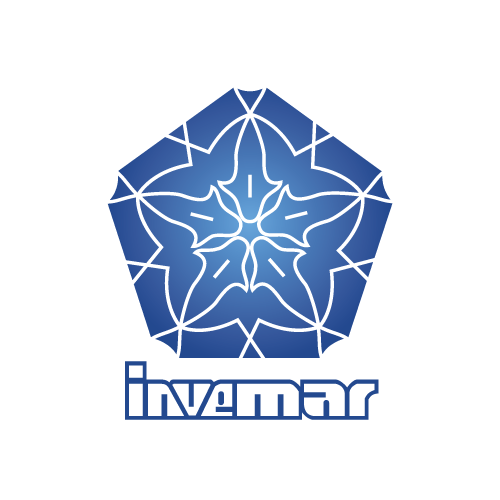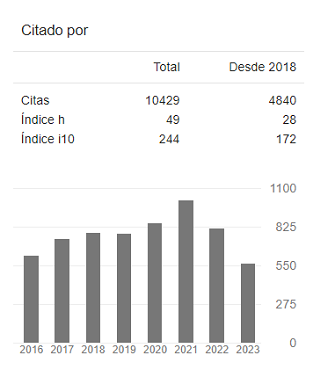Resumen (es):
Se describe una nueva especie de rana nodriza proveniente de las estribaciones andinas en el
departamento de Boyacá y asociada a la cuenca del río Orinoco en Colombia. Esta especie posee una
similitud morfológica con Hyloxalus picachos que habita en las estribaciones andinas en el departamento
de Caquetá, pero difiere de esta porque la banda lateral oblicua se extiende hasta el rostro y por su
patrón cromático del iris en vida. Se describe el cambio ontogénico de sus estados larvales junto con sus
vocalizaciones que están compuestas por notas simples, con una tasa de vocalización de 124 notas por
minuto y con estructura espectral que consiste en cinco armónicos con una frecuencia dominante entre
4213,3--5828,2 Hz. Con la descripción de esta nueva especie se reconocen 23 especies para este género
en Colombia.
Resumen (en):
Palabras clave:
Bioacustics, Foothills, Hyloxalus, Tadpoles, Taxonomy (en)
Referencias
Acosta-Galvis, A. R., Cuentas, D. y Coloma, L. (1999). Una nueva especie de Colostethus (Anura: Dendrobatidae) de la región del Caribe de Colombia. Revista de la Academia Colombiana de Ciencias Exactas, Físicas y Naturales, 23 (Suplemento especial): 225-230.
Altig, R. y McDiarmid, R. W. (1999). Body plan: development and morphology. En McDiarmid, R.W. y Altig R. (Eds.) Tadpole: the biology of anuran larvae. London: The University of Chicago Press. 458 pp.
Amézquita, A., Lima, A. P., Jehle, R., Castellanos, L., Ramos, O., Crawford, A. J., Gasser, H. y Hoedl, W. (2009). Calls, colours, shape, and genes: a multi-trait approach to the study of geographic variation in the Amazonian frog Allobates femoralis. Biological Journal of the Linnean Society, 98(4): 826-838.
Anganoy-Criollo, M. (2012). A new species of Allobates (Anura, Dendrobatidae) from the western flank of the Serranía de Perijá, Colombia. Zootaxa, 3308(1): 49-62.
Anganoy-Criollo, M. (2013). Tadpoles of the High-Andean Hyloxalus subpunctatus (Anura: Dendrobatidae) with description of larval variation and species distinction by larval morphology. Papéis Avulsos de Zoologia, 53 (15): 221-224.
Angarita-Sierra, T., Anganoy-Criollo, M., Ospina-Sarria, J. J., Pedroza-Banda, R. y Lynch, J. D. (2013). Guía de campo de los anfibios y reptiles del departamento de Casanare-Colombia. Bogotá- Arauca: Universidad Nacional de Colombia, Sede Orinoquia, YOLUKA ONG, Fundación de Investigación en Biodiversidad y Conservación. 117 pp.
Ardila-Robayo, M. C., Acosta-Galvis, A. R. y Coloma, L. (1999). Una nueva especie de Colostethus Cope, 1867 (Amphibia: Anura: Dendrobatidae) de la cordillera Oriental colombiana. Revista de la Academia Colombiana de Ciencias Exactas, Físicas y Naturales, 23 (Suplemento especial): 239-244.
Ardila-Robayo, M. C. y Acosta-Galvis, A. R. (2000). Anfibios. Colombia diversidad biótica III la región de vida paramuna de Colombia. Bogotá D. C.: Universidad Nacional de Colombia. Pp. 617-628.
Bernal, M. H. y Lynch, J. D. (2008). Review and analysis of altitudinal distribution of the Andean anurans in Colombia. Zootaxa, 1826(1): 1-25.
Boulenger, G. A. (1912). Descriptions of new batrachians from the Andes of South America, preserved in the British Museum. Annals and Magazine of Natural History, Series 8, 10: 185-191. Caldwell, J. P., Lima, A. P. y Keller, C. (2002).
Redescription of Colostethus marchesianus (Melin, 1941) from its type locality. Copeia, 2002 (1): 157-165.
Caldwell, J. P., Lima, A. P., Biavati, G. M. y Guyer, C. (2002 b). Descriptions of tadpoles of Colostethus marchesianus and Colostethus caeruleodactylus (Anura: Dendrobatidae) from their type localities. Copeia, 2002(1): 166-172.
Charif, R., Waack, A. y Strickman, L. (2010). Raven Pro 1.4. Ithaca, NY: Cornell Lab of Ornithology. 379 pp.
Chen, M. y Combs, C. (1999). An alternative anesthesia for amphibians: ventral application of benzocaine. Herpetological Review, 30(1): 34-34.
Cisneros-Heredia, D. F. y Mcdiarmid, R. W. (2007). Revision of the characters of Centrolenidae (Amphibia: Anura: Athesphatanura), with comments on its taxonomy and the description of new taxa of glassfrogs. Zootaxa, 1572: 1-82.
Cochran, D. M. y Goin, C. J. (1970). Frogs of Colombia. Estados Unidos: Smithsonian Institution Press. 655 pp.
Coloma, L. A. 1(995). Ecuadorian frogs of the genus Colostethus (Anura: Dendrobatidae), Natural History Museum, University of Kansas, (87): 1-72.
Cocroft, R. B. y Ryan, M. J. (1995). Patterns of advertisement call evolution in toads and chorus frogs. Animal Behaviour, 49(2): 283-303.
De la Riva, I., Márquez, R., y Bosch, J. (1996). The advertisement calls of three South American poison frogs (Amphibia: Anura: Dendrobatidae), with comments on their taxonomy and distribution. Journal of Natural History, 30(9):1413-1420.
Dinerstein, E., Olson, D. M., Graham, D. J., Webster, A. L., Primm, S. A., Bookbinder, M. P., Ledec, G. y Young, K. R. (1995). A conservation assessment of the terrestrial ecoregions of Latin America and the Caribbean. Washington DC.: World Bank. 129 pp.
Duellman, W. E. (1978). The biology of an equatorial herpetofauna in Amazonian Ecuador Lawrence. University of Kansas, Museum of Natural History, Miscellaneous Publication, 65:1-352.
Duellman, W. E. y Pyles, R. A. (1983). Acoustic resource partitioning in anuran communities. Copeia, 1983(3): 639-649.
Duellman, W. E. y Lehr, E. (2009). Terrestrial Breeding Frogs (Strabomantidae) in Perú. Berlin Natur und Tier Verlag. 382 pp.
Edwards, S. R. (1974). Taxonomic notes on South American dendrobatid frogs of the genus Colostethus. Occasional Papers of the Museum of Natural History, University of Kansas, 30: 1-14.
Fandiño, M. C., Lüddecke, H. y Amézquita, A. (1997). “Vocalisation and larval transportation of male Colostethus subpunctatus (Anura: Dendrobatidae). Amphibia-Reptilia, 18(1): 39-48.
Gosner, K. L. (1960). A simplified table for staging anuran embryos and larvae with notes on identification. Herpetologica, 16(3): 183-190.
Grant, T. (2004). On the identities of Colostethus inguinalis (Cope, 1868) and C. panamensis (Dunn, 1933), with comments on C. latinasus (Cope, 1863) (Anura: Dendrobatidae). American Museum Novitates, (3444): 1-24.
Grant, T. y Castro, F. (1998). The cloud forest Colostethus (Anura, Dendrobatidae) of a region of the cordillera Occidental of Colombia. Journal of Herpetology, 32(3): 378-392.
Grant, T., Humphrey, E. C. y Myers, C. W. (1997). The median lingual process of frogs: a bizarre character of Old World ranoids discovered in South American dendrobatids. American Museum Novitates, (3212): 1-40.
Grant, T. y Rodríguez, L. O. (2001). Two new species of frogs of the genus Colostethus (Dendrobatidae) from Perú and a redescription of C. trilineatus (Boulenger, 1883).” American Museum Novitates, (3335): 1-24.
Grant, T. y Ardila-Robayo, M. C. (2002). A new species of Colostethus (Anura: Dendrobatidae) from the eastern slopes of the cordillera Oriental of Colombia. Herpetologica, 58(2): 252-260.
Grant, T., Frost, D. R., Caldwell, J. P., Gagliardo, R., Haddad, C. F., Kok, P. J. y Wheeler, W. C. (2006). Phylogenetic systematics of dart-poison frogs and their relatives (Amphibia: Athesphatanura: Dendrobatidae). Bulletin of the American Museum of natural History, 1-262.
Grant, T., Acosta-Galvis, A.R. y Rada, M. (2007). A name for the species of Allobates (Anura: Dendrobatoidea: Aromobatidae) from the Magdalena Valley of Colombia. Copeia, 2007(4): 844-854.
Grant, T, Rada, M., Anganoy-Criollo, M., Batista, A., Días, P. H., Jeckel, A. M, Machado, D. J. y Rueda-Almonacid, J. V. (2017). Phylogenetic Systematics of Dart-Poison Frogs and their Relatives Revisited (Anura: Dendrobatoidea). South American Journal of Herpetology, 12(Special Issue 1):S1-S90.
Kaplan, M. (1997). A new species of Colostethus from the Sierra Nevada de Santa Marta (Colombia) with comments on intergeneric relationships within the Dendrobatidae. Journal of Herpetology, 31(3): 369-375.
Koch, C., Venegas, P. J. y Rödder, D. (2011). Advertisement call of Hyloxalus elachyhistus (Edwards, 1971) (Anura, Dendrobatidae). Salamandra, 47(2) :116-119.
Kok, P. J. (2010). A redescription of Anomaloglossus praderioi (La Marca, 1998) (Anura: Aromobatidae: Anomaloglossinae), with description of its tadpole and call. Papéis Avulsos de Zoologia, 50(4): 51-68.
Kok, P. J., Willaert, B. y Means, D. B. (2013). A new diagnosis and description of Anomaloglossus roraima (La Marca, 1998) (Anura: Aromobatidae: Anomaloglossinae), with description of its tadpole and call. South American Journal of Herpetology, 8(1): 29-45.
Köhler, J. y Lötters, S. (1999). Annotated list of amphibian records from the Departamento Pando, Bolivia, with description of some advertisement calls. Bonner Zoologische Beiträge, 48:259-273.
Köhler, J., Jansen, M., Rodríguez, A., Kok, P. J. R., Toledo, L. F., Emmrich, M., Glaw, F., Haddad, C. F. B., Rödel, M. O. y Vences, M. (2017). The use of bioacoustics in anuran taxonomy: theory, terminology, methods and recommendations for best practice. Zootaxa, 4251 (1): 001-124.
Lescure, J. (1976). Contribution à l’étude des amphibiens de Guyane française. VI. Liste préliminaire des anoures. Bulletin du Muséum National d’histoire Naturelle, 377:475-525.
Lima, A. P., Caldwell, J. P. y Strussmann, C. (2009). Redescription of Allobates brunneus (Cope) 1887 (Anura: Aromobatidae: Allobatinae), with a description of the tadpole, call, and reproductive behavior. Zootaxa, 1988 (1): 1-16.
Lima, A., Caldewell, J., Biavati, G. y Montanarin, A. (2010). A new species of Allobates (Anura: Aromobatidae) from paleovárzea forest in Amazonas, Brazil. Zootaxa, 2337:1-17.
Lynch, J. D. (1982). Two new species of poison-dart frogs (Colostethus) from Colombia. Herpetologica, 38:366-374.
Lynch, J. D. (2006). The amphibian fauna in the Villavicencio region of eastern Colombia. Caldasia, 28(1): 135-155.
McDiarmid, R. W. y Altig, R. (1999). Tadpoles: the biology of anuran larvae, University of Chicago Press. 444 pp.
Morales, V. R. (2002 “2000”). Sistemática y biogeografía del grupo trilineatus (Amphibia, Anura, Dendrobatidae, Colostethus), con descripción de once nuevas especies. Publicaciones de la Asociación de Amigos Doñana, 13: 1-59.
Muñoz-Ortiz A., Velásquez-Álvarez, A. A., Guarnizo, C. E y Crawford, A. J. (2015). Of peaks and valleys: testing the roles of orogeny and habitat heterogeneity in driving allopatry in midelevation frogs (Aromobatidae: Rheobates) of the northern Andes. Journal of Biogeography, 42: 193-205.
Myers, C. W. (1991). Distribution of the dendrobatid frog Colostethus chocoensis and description of a related species occurring macrosympatrically. American Museum Novitates, 3010: 1-15.
Myers, C. W., Paolillo, O. A. y J. W. Daly. (1991). Discovery of a defensively malodorous and nocturnal frog in the family Dendrobatidae: phylogenetic significance of a new genus and species from the Venezuelan Andes. American Museum Novitates, (3002): 1-33.
Navas, C. A. (1996). Thermal dependency of field locomotor and vocal performance of highelevation anurans in the tropical Andes. Journal of Herpetology, 30(4): 478-487.
Navas, C. A. (1996 a). The effect of temperature on the vocal activity of tropical anurans: a comparison of high and low-elevation species. Journal of Herpetology, 30(4): 488-497.
Navas, C. A., y Bevier, C. R. (2001). Thermal dependency of calling performance in the eurythermic frog Colostethus subpunctatus. Herpetologica, 57(3): 384-395.
Olson, D. M. y Dinerstein, E. (2002). The Global 200: Priority ecoregions for global conservation. Annals of the Missouri Botanical Garden, 89: 199-224 p.
Páez-Vacas, M. I., Coloma, L. A. y Santos, J. C. (2010). Systematics of the Hyloxalus bocagei complex (Anura: Dendrobatidae), description of two new cryptic species, and recognition of H. maculosus. Zootaxa, 2711: 1-75.
Pedroza-Banda, R., Ospina-Sarria, J. J., Angarita-Sierra, T., Anganoy-Criollo, M. y Lynch, J. D. (2014). Estado del conocimiento de la fauna de anfibios y reptiles del departamento de Casanare, Colombia. Revista de la Academia
Colombiana de Ciencias Exactas, Físicas y Naturales, 38(146): 17-34.
Pyburn, W. F. (1981). A new poison-dart frog (Anura: Dendrobatidae) from the forest of southeastern Colombia. Proceedings of the Biological Society of Washington, 94: 67-75.
Pyron, R. A. y Wiens, J. J. (2011). A large-scale phylogeny of Amphibia including over 2800 species, and a revised classification of extant frogs, salamanders, and caecilians. Molecular Phylogenetics and Evolution, 61: 543-583.
Rivero, J. A. (1991). New Colostethus (Amphibia, Dendrobatidae) from South America. Breviora. Museum of Comparative Zoology, Cambridge, Massachusetts, 493:1-28.
Rivero, J. A., y Serna, M. A. (1986). Dos nuevas especies de Colostethus (Amphibia, Dendrobatidae). Caldasia, 15: 525-531.
Rivero, J. A. y Serna, M. A. (1991). Tres nuevas especies de Colostethus (Amphibia, Dendrobatidae) de Colombia. Trianea, 4: 481-495.
Rivero, J. A. y Granados-Díaz, H. (1990 “1989”). Nuevos Colostethus (Amphibia, Dendrobatidae) del departamento de Cauca, Colombia. Caribbean Journal of Science, 25: 148-152.
Rivero, J. A. y Serna, M. A. (1995). Nuevos Colostethus (Amphibia, Dendrobatidae) del departamento de Antioquia, Colombia, con la descripción del renacuajo de Colostethus fraterdanieli. Revista de Ecologia Latino Americana, 2(1-3): 45-58.
Sánchez, D. A. (2013). Larval morphology of Dart-Poison Frogs (Anura: Dendrobatoidea: Aromobatidae and Dendrobatidae). Zootaxa, 3637(5): 569-591.
San Mauro, D., Gower, D. J., Oommen, O. V., Wilkinson, M. y Zardoya, R. (2004). Phylogeny of caecilian amphibians (Gymnophiona) based on complete mitochondrial genomes and nuclear RAG1. Molecular Phylogenetics and Evolution, 33(2): 413-427.
Santos J.C., Coloma, L.A. y Cannatella, D. C. (2003). Multiple, recurring origins of aposematism and diet specialization in poison frogs. Proceedings of the National Academy of Sciences, USA 100: 21335-21100.
Santos J. C., Baquero, M., Barrio-Amoros, C., Coloma, L. A., Erdtmann, L. K., Lima, A. P. y Cannatella, D. C. (2014). Aposematism increases acoustic diversification and speciation in poison frogs. Proceedings of the Royal Society B: Biological Sciences, 281: 20141761.
Savage, J. M. (1968). The dendrobatid frogs of Central America. Copeia, 1968(4): 745-776. Savage, J. M. (2002). The amphibians and reptiles of Costa Rica: a herpetofauna between two continents, between two seas. University of Chicago Press. 954 pp.
Silverstone, P. A. (1971). Status of certain frogs of the genus Colostethus with descriptions of new species. Contributions in Science, Natural History Museum. Los Angeles County, (215): 1-8.
Silverstone, P. A. (1975). Two new species of Colostethus (Amphibia: Anura: Dendrobatidae) from Colombia. Contributions in Science. Natural History Museum of Los Angeles County, (268): 1-10.
Silverstone, P. A. (1976). A revision of the Poison-Arrow Frogs of the Genus Phyllobates Bibron in sagra (Family Dendrobatidae). Natural History Museum of Los Angeles County, Science Bulletin, 27 (1-53).
Stebbins, R. C. y Hendrickson, J. R. (1959). Field studies of amphibians in Colombia, South America. University of California Publications in Zoology, 56(5): 497-540.
Vences, M., Kosuch, J., Lötters, S., Widmer, A., Jungfer, K. H., Köhler, J., y Veith, M. (2000). Phylogeny and classification of poison frogs (Amphibia: Dendrobatidae), based on mitochondrial 16S and 12S ribosomal RNA gene sequences. Molecular Phylogenetics and Evolution, 15(1): 34-40.
Vences M., Kosuch, J., Haddad, C. F. B., La Marca, E., Lötters, S. y Veith, M. (2003). Convergent evolution of aposematic coloration in Neotropical poison frogs: a molecular phylogenetic perspective. Organisms Diversity and Evolution, 3: 215-226.
Zardoya, R. y Meyer, A. (1996). Phylogenetic performance of mitochondrial protein-coding genes in resolving relationships among vertebrates. Molecular Biology and Evolution, 13: 933-942.
Cómo citar
Las obras publicadas en las revistas del Instituto de Investigación de Recursos Biológicos Alexander von Humboldt están sujetas a los siguientes términos, con relación al derecho de autor:
1. Los derechos patrimoniales de las obras publicadas tienen como titular al Instituto de Investigación de Recursos Biológicos Alexander von Humboldt. Los autores o las instituciones que elaboran el documento aceptan ceder los derechos patrimoniales al Instituto Humboldt con el envío de sus artículos, lo que permite –entre otras cosas– la reproducción, comunicación pública, difusión y divulgación de las obras.
2. Las obras de ediciones digitales se publican bajo una licencia de Creative Commons Colombia:
Esta obra está bajo una Licencia Creative Commons Atribución-NoComercial-SinDerivar 4.0 Internacional.
Atribución – No comercial – Sin Derivar: Esta licencia es la más restrictiva de las seis licencias principales, sólo permite que otros puedan descargar las obras y compartirlas con otras personas, siempre que se reconozca su autoría, pero no se pueden cambiar de ninguna manera ni se pueden utilizar comercialmente.
3. Los autores, al someter artículos al proceso editorial de las revistas editadas por el Instituto Humboldt, aceptan las disposiciones institucionales sobre derechos de autor y acceso abierto.
4. Todos los artículos recibidos serán sometidos a un software antiplagio. El sometimiento de un artículo a las revistas del Instituto Humboldt se entiende como la aceptación de la revisión para detectar posible plagio.
5. Las obras sometidas al proceso de edición de las revistas del Instituto Humboldt deben ser inéditas.

